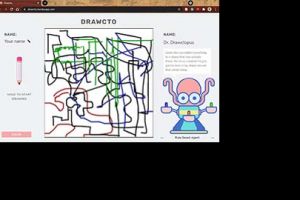Non-representational art--such as works by Wassily Kandinsky, Joan Mitchell, Willem de Kooning, etc.--showcases diverse artistic expressions and challenges viewers with its interpretive open-endedness and lack of a clear mapping to our everyday reality. Human cognition and perception nonetheless aid us in making sense of, reasoning about, and discussing the perceptual features prevalent in such non-representational art. While there have been various Computational Creative systems capable of generating representational artwork, only a few existing Computational (Co)Creative systems for visual arts can produce non-representational art. Inspired by this, we propose a new drawing application Drawcto a multi-agent AI that incorporates elements of the human visual perception theory capable of co-creating non-representational art with a human collaborator on the web.

The Expressive Machinery Lab (formerly ADAM Lab) explores the intersection between cognition, creativity, and computation through the study of creative human endeavors and by building digital media artifacts that represent our findings. Applications of our findings range from AI-based digital performance to interactive narrative experiences to educational media design and development.



